How to create the perfect outdoor pool: from design to Code of Compliance
Written by
04 September 2024
•
6 min read

Creating the perfect backyard pool is a dream for many, but transforming a patch of dirt into a resort-like oasis requires strategic design and meticulous planning. We spoke with Brett Maclennan, a pool and landscaping expert from Outdoor Design Studios, which encompasses the brands Shafer Design Studio and Topia Garden Design, to explore the process from concept to completion.
Your dream pool
The first step when planning an outdoor pool is to identify how the pool will be used, says Maclennan.
“Will it be used primarily for family recreation, fitness, relaxation (a spa) or aesthetic appeal? This will influence the pool’s design, size, and how it interacts with the surrounding space”
To give your landscape designer an idea of your design preferences, scrapbook any design inspiration images that align with your home and the overall look and feel you’d like to achieve. Once you have a good idea of the purpose and aesthetic, it’s time to engage with an experienced landscape designer who will help you navigate the complexities of the project, from the initial consultation and site appraisals, right through to the final design including any consents required.
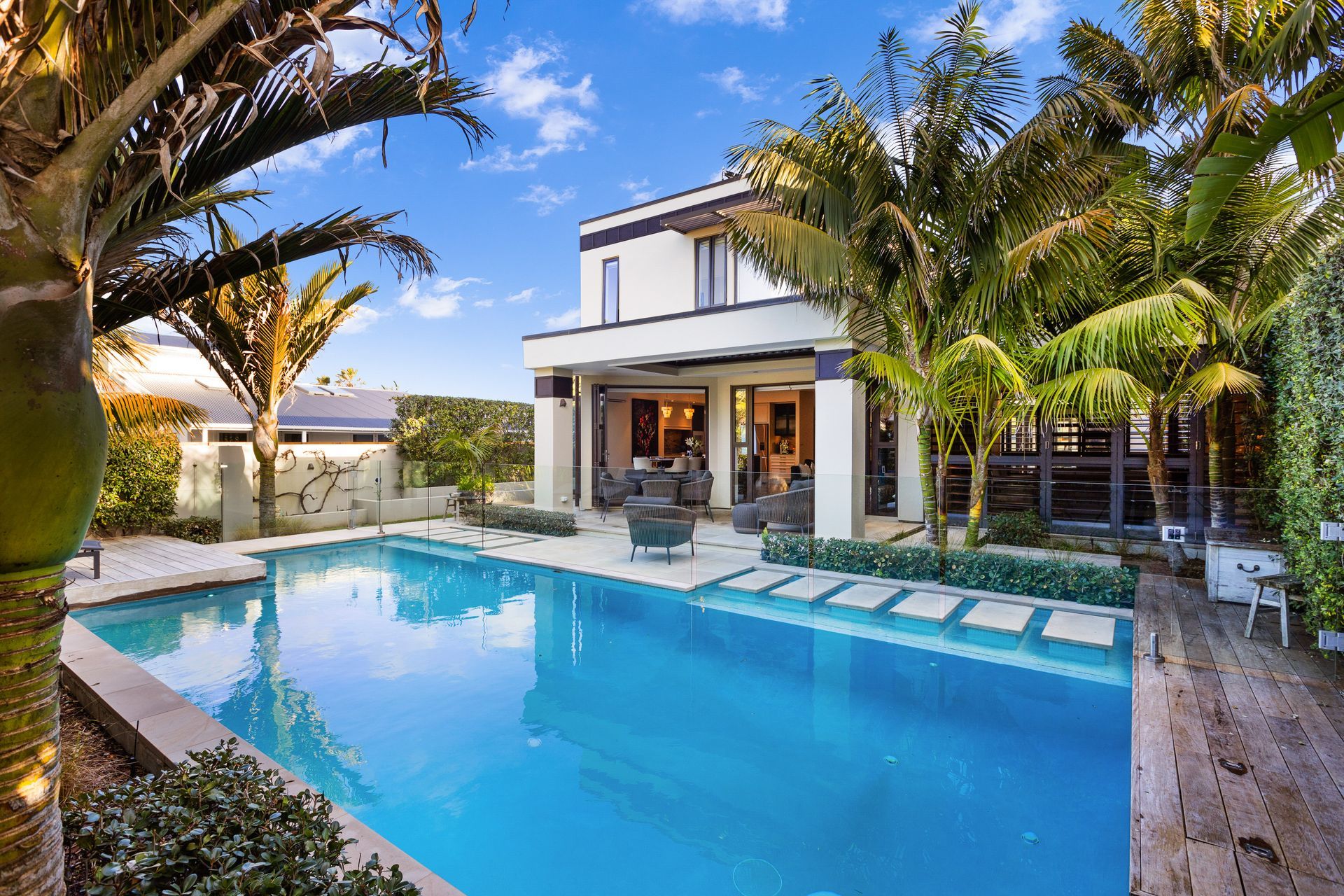
Call in the experts
After gathering inspo, the first step after engaging a professional is to meet on-site to discuss your brief.
“This meeting is all about understanding what the clients would like to achieve. Being on site is always preferred as this helps us get a better understanding of the existing spatial layout and any design opportunities and constraints.”
Your landscape designer can run through the myriad choices available, including above-ground or below-ground designs, sitting spaces within the pool itself, and whether you want to integrate solar heating.
Another crucial part of the concept stage is maximising the look and functionality of the landscaping around the pool.
“Well-considered landscaping helps to integrate the pool into the receiving environment/existing garden and outdoor living,” shares Maclennan. “A carefully selected palette of plants, materials and design details will complement the existing property and enhance the visual appeal and comfort of the pool environment.”
Your designer will be able to offer advice and options on how to ensure the pool design complements the existing landscaping and the architecture of the home.
“Identifying the overall design style of the home and garden early on helps to inform the design process, creating a consistent design language with which to develop the design of the pool, thereby creating a strong visual connection from spaces within the home.”
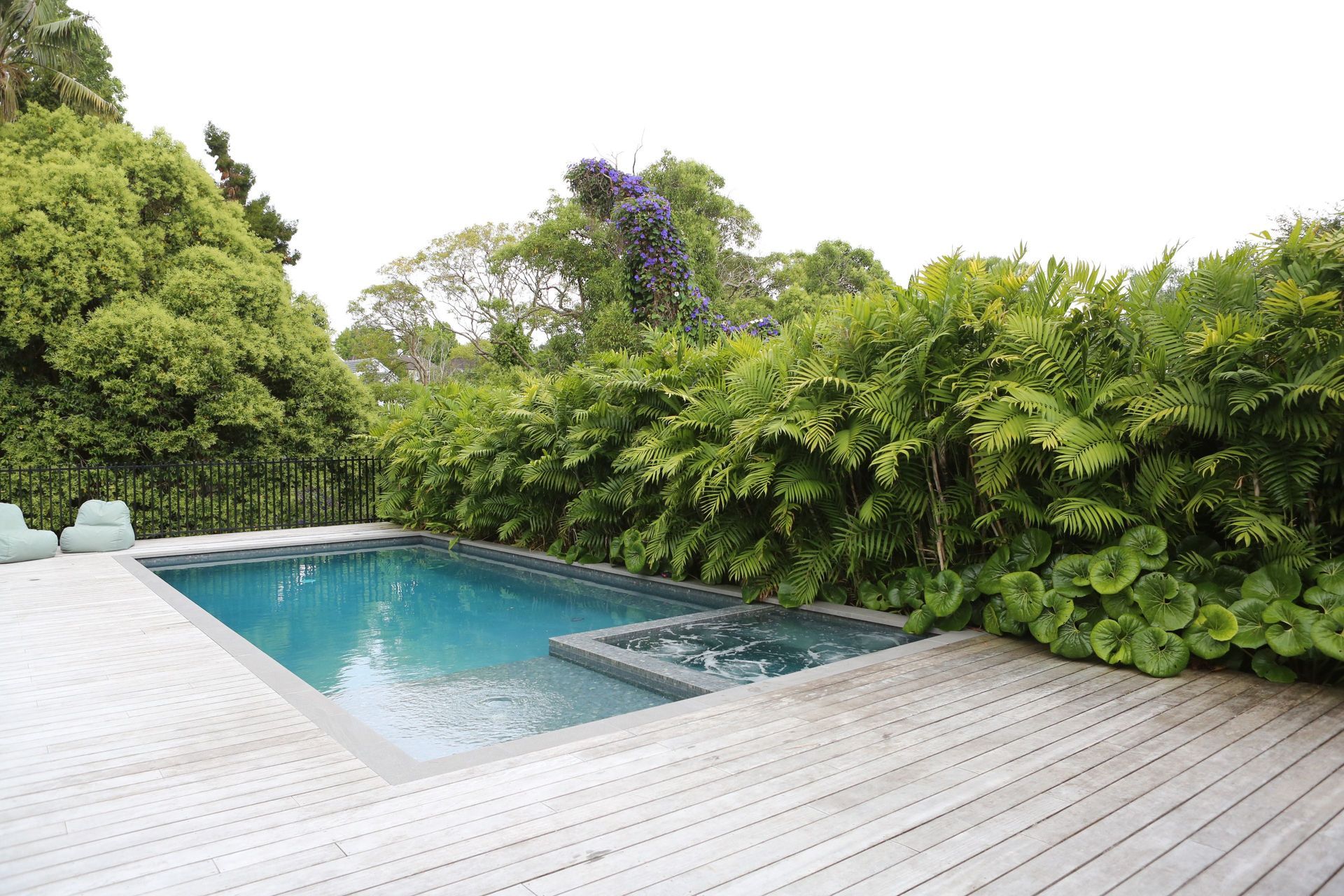
How the design process works
Choosing the location for an outdoor pool requires careful consideration, both for practical reasons of viability, as well as aesthetics. How the new pool enclosure integrates with the existing home (both physically and with visibility in mind) is key, says Maclennan.
“Harmonising the pool with the existing garden and outdoor living environment, both physically and aesthetically is crucial, as well as creating visual separation and privacy from neighbouring properties.”
Level changes are another parameter to consider and have a part to play in the type, size, and shape of the pool. Another consideration is maximising sunlight and avoiding excessive shade.
“How sun/shade is managed is often discussed and resolved during the design process, as well as shelter from wind which cools pool water and limits the enjoyment of the pool overall.”
Regulatory requirements also play a big part in the positioning of the pool. Building Code requirements include below-ground infrastructure (wastewater/stormwater, drainage pipes etc), as well as the location of the pool barriers above ground.
Maclennan says consent requirements can be tricky to navigate for homeowners who haven’t been through the process before.
“It’s a good idea to work closely with a landscape designer who has the experience and understanding in how to resolve these issues.”
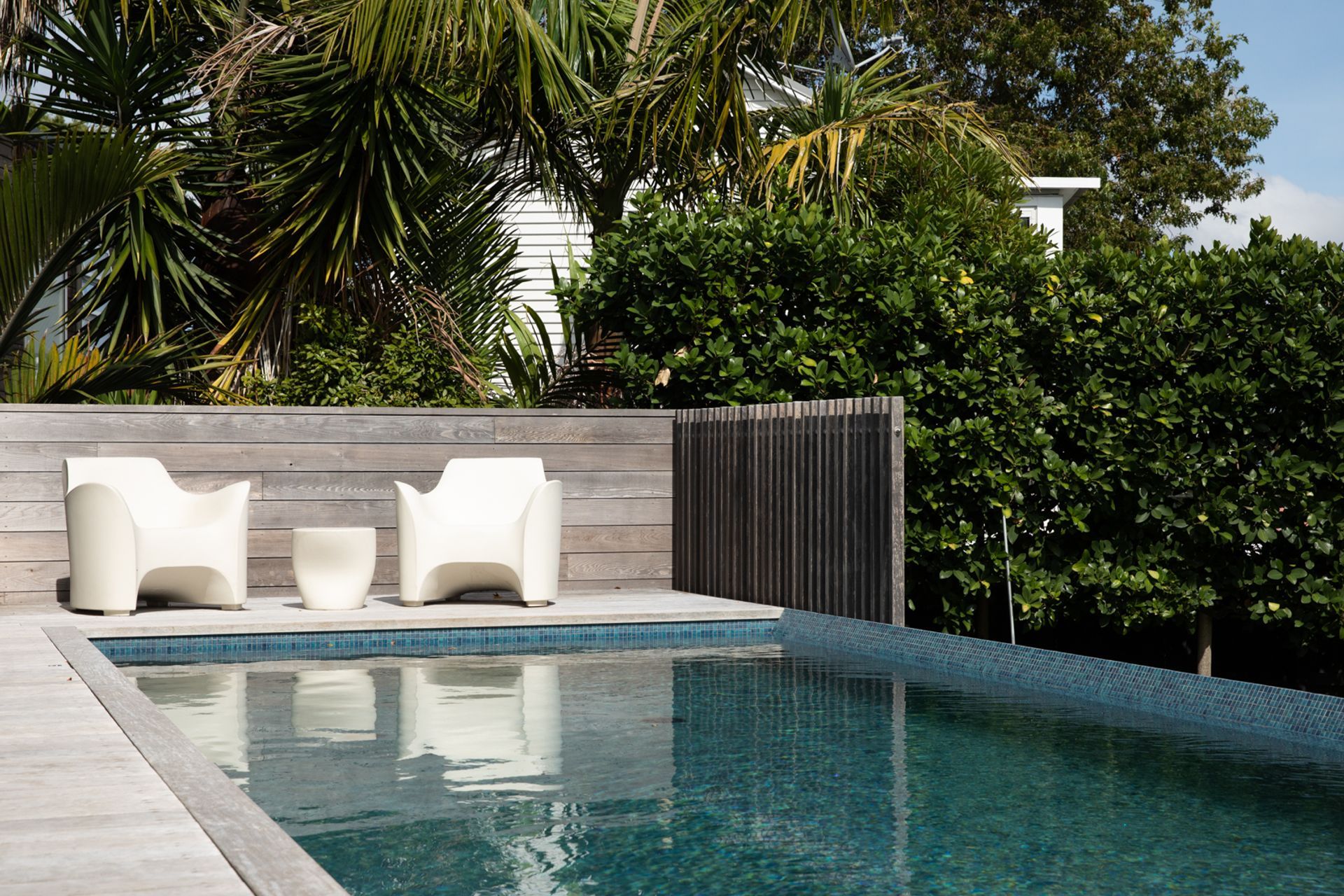
Getting council consent
“A thorough understanding of Planning and Building Code requirements and process is essential, as well as getting all of the right consultants briefed and engaged in a timely manner to provide the necessary documentation for the process,” shares Maclennan.
Consultants may include surveyors, geotech engineers, stormwater and structural engineers, and product suppliers.
Making sure a pool barrier is integrated into the design from the outset of the process is also crucial to obtaining your Building Consent; engaging a landscape designer who can oversee the entire process from start to finish is the simplest way of getting your pool signed off without any issues.
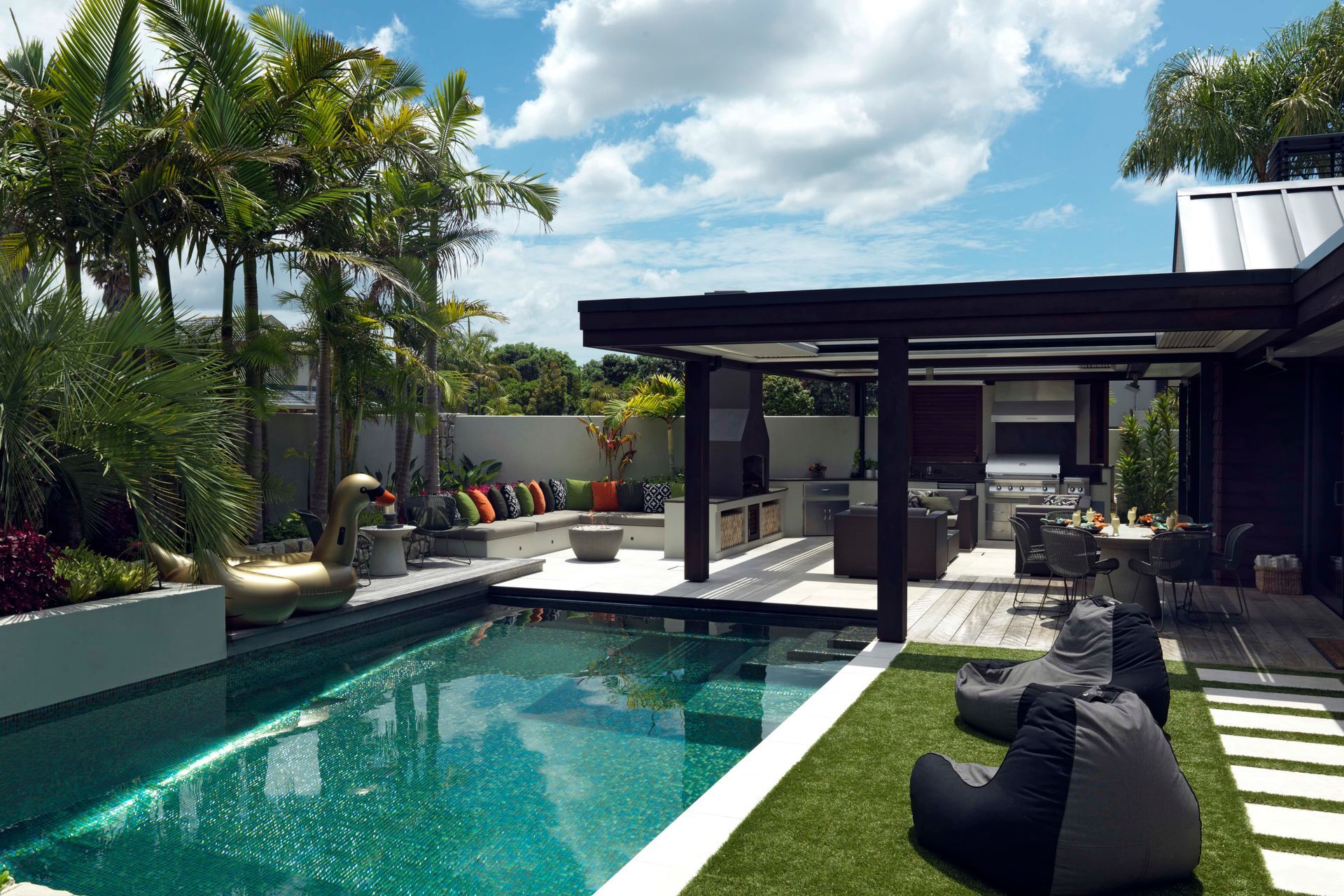
Common challenges when creating a pool
As with any new construction project, challenges are often unforeseen, therefore, having as much information as possible at the outset helps ensure the project runs as smoothly as possible.
Engaging with consultants at the very beginning is the best way to mitigate delays, and using a landscape designer with a team of trusted consultants at hand is ideal.
“We engage in a thorough assessment of the District Plan and property files to uncover/avoid/design around any issues. Our process is iterative which allows for modifications to the design along the way to overcome challenges, too.”
Another common challenge is underestimating the budget required to complete a pool project. Often homeowners are given ball-park figures for a new pool that don’t reflect the actual specifics of their property, brief and design requirements shares Maclennan.
“People are often told that pools cost ‘X’ number of dollars, however, this almost always does not include the cost of the design and consent process, consultants and the overall costs to install everything which comes along with the pool (excavation, patios/deck, drainage, pool fencing, shade structures/cabanas, landscaping, and lighting.”
To understand the true cost of building a pool at your home, have a landscape designer assess your property and discuss your design brief.
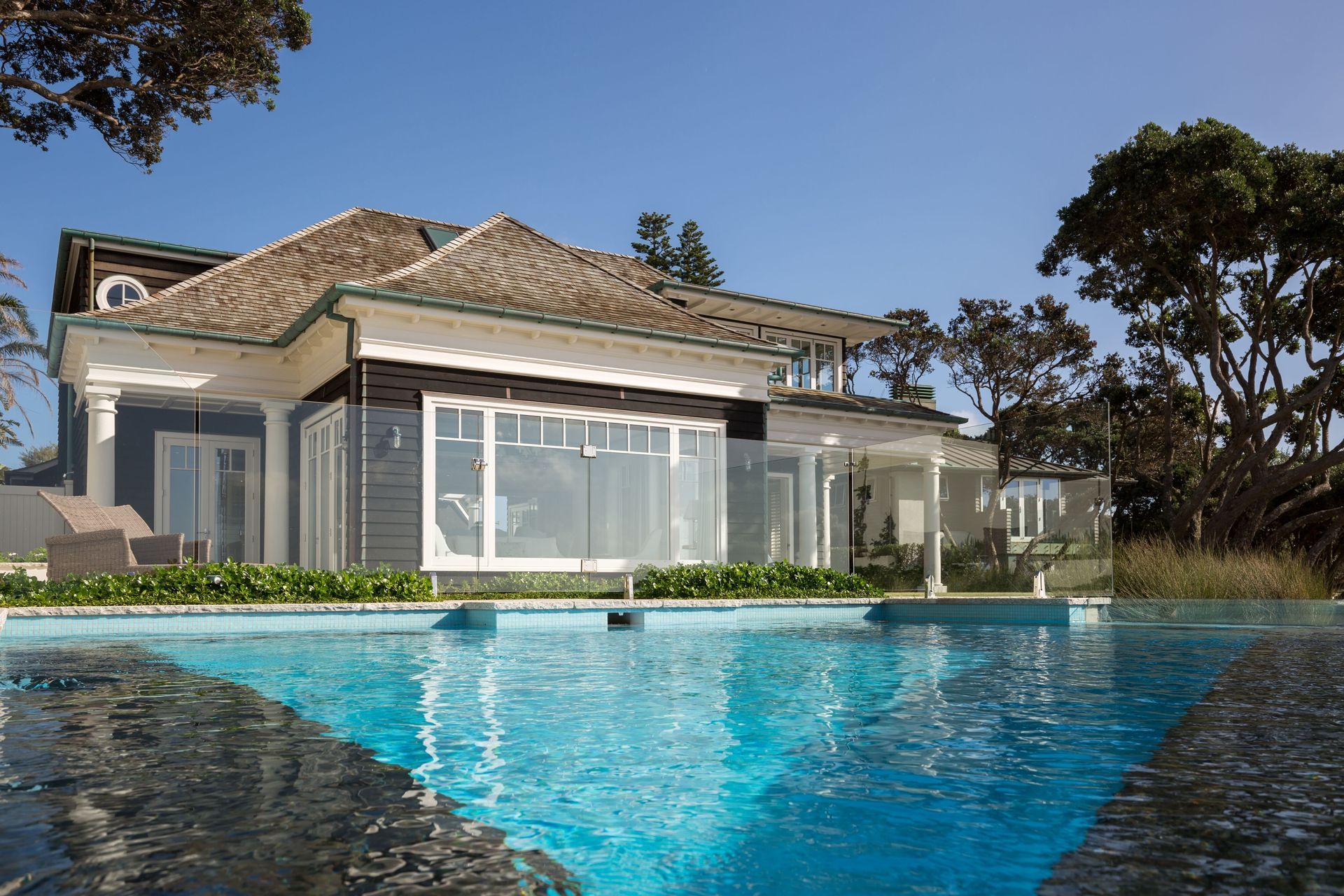
What’s involved
Look for a landscape designer who provides a ‘full’ design service, which means they can manage the whole process on your behalf. A full service from Outdoor Design Studios includes:
- Site appraisals and client briefing
- Concept design including detailed 2-D plans accompanied by 3-D renders as required
- Engagement and management of consultants including surveyors, geotech, stormwater and structural engineers, product suppliers
- Detailed design for consents (Resource, Building and Works Over consents) as required
- Contractor procurement (for the build phase)
- Detailed design for construction (planting and lighting design, specific design detailing, material selections etc.)
- On-site design management and coordination during the build phase (including amendments and variations to consents if required)
- CCC applications at the end of the project
While the many steps from design concept to completion to achieve your dream pool may seem daunting, there are experts who can facilitate and manage the process on your behalf.
Outdoor Design Studios Limited is a long-established company that has been owned and operated by Brett Maclennan since 2013. The company operates the two well-known brands of Topia Garden Design and Shafer Design Studio.
Need some inspiration for that dream pool scrapbook? Explore outdoor pool projects by Shafer Design Studios and Topia Garden Design